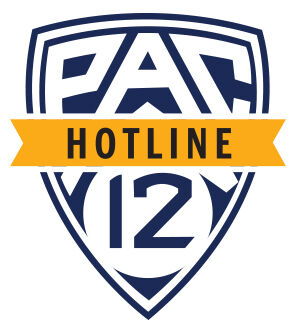Five nuggets as we look ahead to Week 1:
1. Defining success
With so much attention on the twin duels in SEC country, we should not forget 2021.
Oregon produced a super-colossal victory at Ohio State on the second Saturday of the season, but the uplifting narrative was eventually swallowed whole as the Pac-12 sustained one result after another in non-conference play.
Five losses to BYU. Two losses to San Diego State. Two losses to FCS opponents.
Too many losses to the Group of Five.
In order for first-class victories to create an afterglow for the entire conference, there must be an underlying foundation of success across the board. Otherwise, the big-game victor is treated as an outlier among the mediocrity.
To that end, four Week One games are vital to the overall optics: Colorado vs. TCU, Washington vs. Kent State, Oregon State vs. Boise State and Arizona at San Diego State.
What does indisputable success look like for the Pac-12 this week?
A victory by either Utah or Oregon.
Three wins in the four games mentioned above.
A sweep of Rice and Bowling Green by the L.A. schools, and no losses in the four games against FCS opponents.
Anything less, and the ledger gets muddled.
2. QBs, and new QBs
Two schools have yet to confirm their starting quarterbacks: Colorado and Oregon.
For the Ducks, it’s all about gamesmanship: Coach Dan Lanning wants to keep Georgia guessing, but Bo Nix is the likely starter against the defending national champions.
Colorado’s shroud is legitimate. We expect both Brendon Lewis, who started in 2021, and JT Shrout, who was injured last year, to play Friday against TCU.
All in all, seven teams will start quarterbacks acquired from the transfer portal in the 2021-22 offseason cycle: Washington, Washington State, Oregon, Cal, USC, Arizona and Arizona State.
Only one, Arizona’s Jayden de Laura, played in the Pac-12 last season (for Washington State).
Five teams will rely on returnees: Oregon State (Chance Nolan), Stanford (Tanner McKee), Utah (Cam Rising), UCLA (Dorian Thompson-Robinson) and Colorado (Lewis or Shrout).
Quarterback play was substandard throughout the Pac-12 last season, in part because of the year-long COVID disruption. We expect noticeable improvement in ’22.
3. Eye on the eyeballs
Two teams play on broadcast television Saturday and therefore have the widest possible audiences: Arizona’s trip to San Diego State will be televised by CBS, while the Oregon-Georgia showdown is set for ABC.
Beyond that, there are three games on ESPN, one on Fox Sports 1 and six on the Pac-12 Networks.
Of those scheduled for the conference’s wholly-owned media company, two will be shown exclusively on their regional feed: Cal vs. UC Davis and Stanford vs. Colgate are on Pac-12 Networks/Bay Area (and the Pac-12 Now app).
Week 3 serves as the peak for national exposure, with four games on over-the-air television.
4. Power lineup
In all, Pac-12 teams are scheduled to play 11 games against Power Five opponents:
Big 12: TCU and Oklahoma State
Big Ten: Wisconsin, Minnesota and Michigan State
SEC: Georgia, Florida, Mississippi State
Independent: Notre Dame (three times)
5. Notable nuggets
The Pac-12 has three teams ranked in the preseason AP poll: No. 7 Utah, No. 11 Oregon and No. 14 USC.
How does that total compare? The SEC has six, the ACC five, the Big Ten four and the Big 12 three.
Utah is the first Pac-12 team to face Florida in Gainesville since USC in 1982, according to the conference office.
Colorado has scored at least 35 points in its last four season openers.
Arizona’s opener at San Diego State is the first game in the new Snapdragon Stadium, which has a current capacity of 35,000.
Oregon State has dropped its past seven season openers.
Stanford’s date with Colgate represents its first matchup in three years against a team outside the Power Five.





